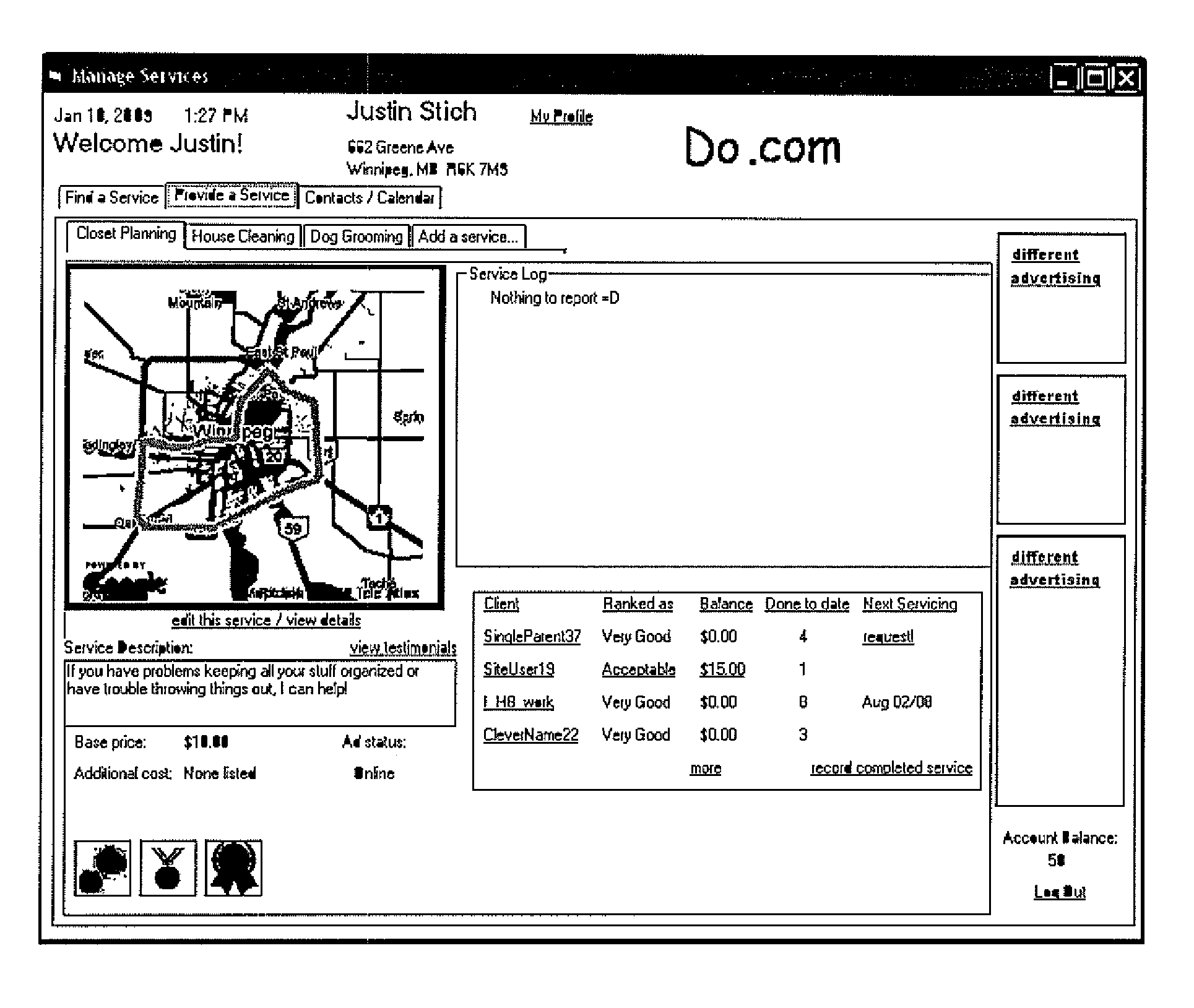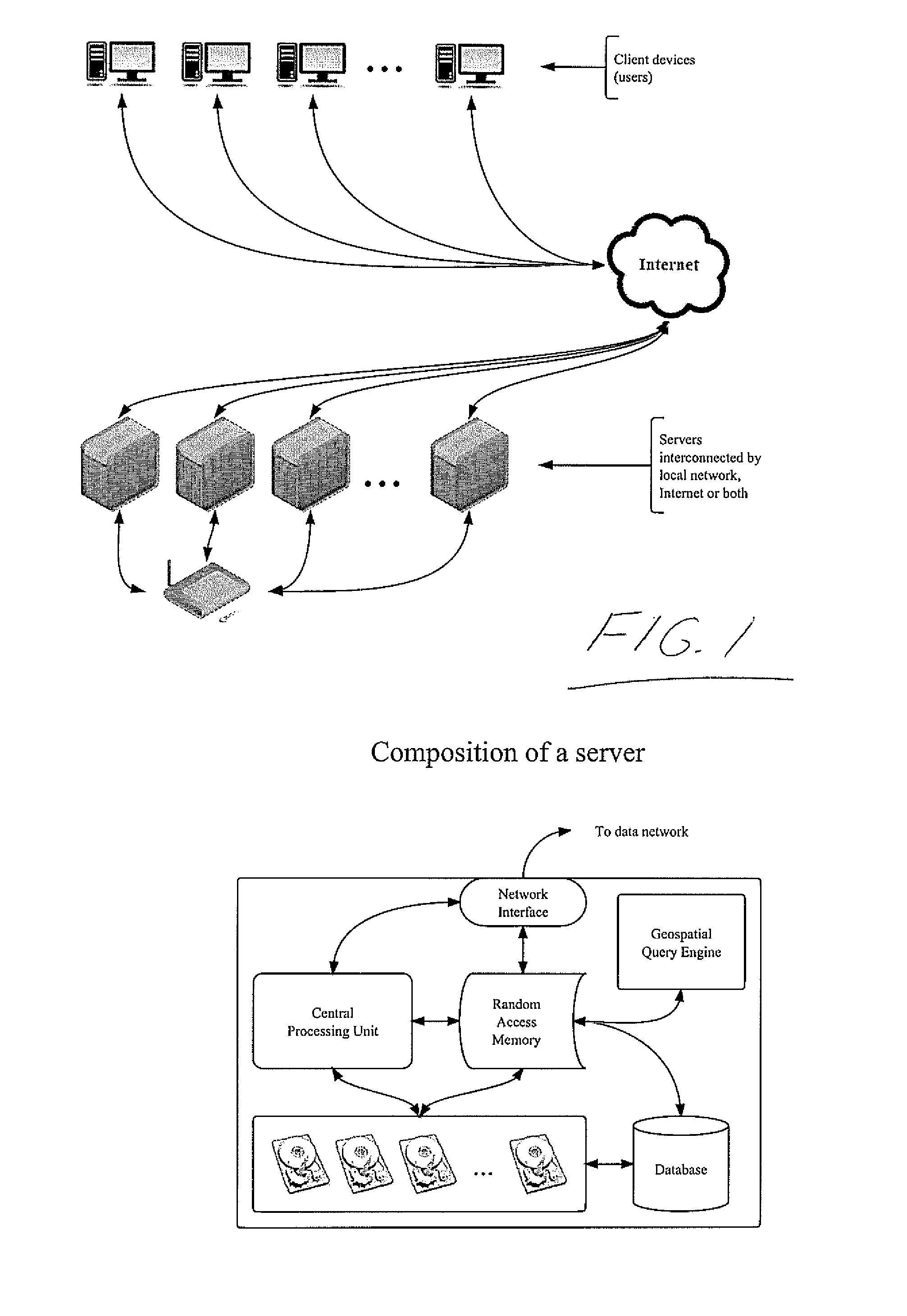Methods, Systems and Machines for Identifying Geospatial Compatibility Between Consumers and Providers of Goods or Services
a technology of geospatial compatibility and consumer, applied in the direction of structured data retrieval, electric digital data processing, instruments, etc., can solve the problems of many users being engulfed in “information overload, consumer does not know if they are not finding, and consumers are not able to easily and accurately locate specific information, so as to improve the access of each other and locate the effect of specific information easily and accurately
- Summary
- Abstract
- Description
- Claims
- Application Information
AI Technical Summary
Benefits of technology
Problems solved by technology
Method used
Image
Examples
Embodiment Construction
[0179]A process whereby providers of goods and services can explicitly define the area in which they are willing to travel to perform services or deliver goods by defining a polygon on a digital map. If goods or services are available at a location where consumers must physically go to in order to obtain the goods or services, a point may be defined on a digital map to disclose the location or an address may be provided which is then geocoded through an online geocoding service. A database of locations (defined as a “point” which is a geographical location defined by a latitude and longitude coordinate) and polygons shapes (which are indexed lists of points which when reconstructed in the order of the index, reproduce the original shape on a digital map by straight-line interconnection of the points in the indexed sequence) is kept and each element in this database is assigned a Master
[0180]Identification Number (MID#) based on the user that created the point or shape. This “Locatio...
PUM
 Login to View More
Login to View More Abstract
Description
Claims
Application Information
 Login to View More
Login to View More - R&D
- Intellectual Property
- Life Sciences
- Materials
- Tech Scout
- Unparalleled Data Quality
- Higher Quality Content
- 60% Fewer Hallucinations
Browse by: Latest US Patents, China's latest patents, Technical Efficacy Thesaurus, Application Domain, Technology Topic, Popular Technical Reports.
© 2025 PatSnap. All rights reserved.Legal|Privacy policy|Modern Slavery Act Transparency Statement|Sitemap|About US| Contact US: help@patsnap.com



